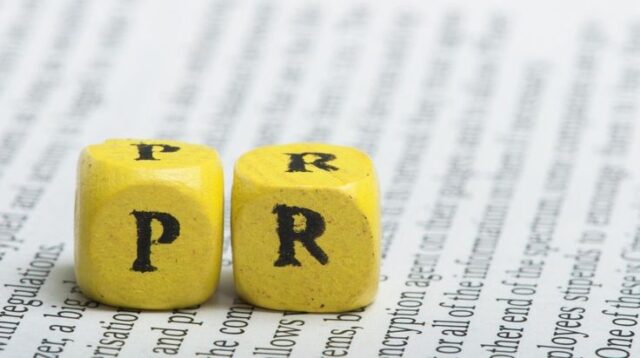In the dynamic landscape of communication and reputation management, Public Relations (PR) plays a pivotal role. As we delve into the world of PR, we’ll explore its essence, dissect its various types, and decipher its relevance in today’s interconnected society.
What Is Public Relations (PR)?
Public Relations, often abbreviated as PR, is an intricate dance of communication and perception management. At its core, PR is the strategic art of shaping and maintaining a favorable image for individuals, organizations, or entities in the eyes of the public. This multifaceted discipline involves crafting compelling narratives, managing crises, and fostering positive relationships with diverse stakeholders.
Describing public relations can be a bit tricky. You know, back in 2012, the folks at the Public Relations Society of America (PRSA) went through tons of submissions before settling on a definition everyone could agree on.
How can a company turn its good relationship with the public into positive press? Is the old saying about “praying” still true if you’re using a strategic process for results? If public relations acts as the bridge for this relationship, then PR professionals are like the builders of that bridge. Let’s look more closely at what they do.
What is a public relations professional?
A public relations professional, often referred to as a PR professional, is an individual with expertise in managing and cultivating the relationship between an organization and the public. Their primary goal is to create and maintain a positive image of the organization in the eyes of the public, clients, customers, and other stakeholders. PR professionals utilize strategic communication techniques to convey information, handle crises, and promote the organization’s brand or message. They work to build and maintain a favorable public perception through media relations, social media, events, and other communication channels. Additionally, they may engage in reputation management, crisis communication, and various initiatives to enhance the overall public image of the organization they represent.
Understanding Public Relations (PR)
To comprehend PR fully, one must appreciate its nuanced nature. It goes beyond mere publicity; it’s about building and nurturing relationships, cultivating trust, and projecting an authentic image. PR professionals act as conduits between an entity and its audience, ensuring that the intended message is not just delivered but also understood and embraced.
Types of Public Relations
Public relations (PR) encompasses various types, each serving distinct purposes within the realm of communication and relationship management. Here are some common types of public relations:
- Media relations involve the strategic management of communication between an organization and the media. This practice aims to build and maintain positive relationships with journalists and other media professionals. Key components include the distribution of press releases, pitching story ideas, creating media kits, and providing media training for spokespeople. Effective media relations are vital for shaping public perception, managing an organization’s reputation, and ensuring that its key messages reach the intended audience through various media channels.
- Community relations involve the strategic management of an organization’s interactions and relationships with the communities in which it operates. The goal is to foster positive connections, understanding, and collaboration between the organization and its local or global communities. This includes engaging in initiatives that contribute to community well-being, addressing social responsibility, and responding to community concerns. Successful community relations enhance the organization’s reputation, build trust, and create a positive impact on both the company and the communities it serves.
- Government relations, also known as public affairs, is a strategic approach to managing the relationship between an organization and government entities. This involves activities aimed at influencing public policy, regulations, and legislation to align with the organization’s interests. Government relations professionals engage with government officials, policymakers, and regulatory bodies to advocate for favorable policies, address concerns, and contribute to the development of laws that impact the organization. Effective government relations help navigate the political landscape, ensure compliance, and create a positive regulatory environment for the organization.
- Employee relations is the practice of fostering and maintaining positive interactions between an organization and its employees. It’s about creating a work environment where communication is open, trust is built, and conflicts are resolved effectively. This involves initiatives to enhance employee satisfaction, address concerns, and promote a healthy workplace culture. Employee relations professionals work to ensure that employees feel valued, heard, and are treated fairly. Building strong employee relations is crucial for employee morale, productivity, and overall organizational success.
- Investor relations is the field dedicated to managing communication between a company and its investors. It involves creating transparency and building trust by providing accurate and timely information about the company’s financial performance, strategies, and plans. Investor relations professionals work to ensure that shareholders and potential investors are well-informed, addressing inquiries and concerns. This practice is essential for maintaining a positive perception of the company in the financial markets, attracting investment, and fostering a long-term relationship with the investment community. Ultimately, effective investor relations contribute to the overall success and stability of the organization.
- Consumer relations is all about nurturing the relationship between a company and its customers. It involves actively listening to customer feedback, addressing concerns, and ensuring a positive overall experience. Professionals in consumer relations work to build trust and loyalty by providing excellent customer service, resolving issues promptly, and conveying the company’s commitment to customer satisfaction. This practice not only helps in retaining existing customers but also contributes to a positive brand image, attracting new customers through word-of-mouth recommendations and positive reviews. In essence, consumer relations is a key aspect of creating lasting connections between a company and its customer base.
- Internal relations is about cultivating positive communication and teamwork within a company. It aims to create a supportive workplace where employees feel valued and connected. This involves building strong relationships between team members, fostering effective communication, and addressing any concerns. Good internal relations enhance job satisfaction, promote a positive work environment, and contribute to the overall success of the organization.
- Production relations involve the coordination and management of activities within a company’s production or manufacturing processes. This includes overseeing the workflow, optimizing efficiency, and ensuring that resources are utilized effectively to meet production goals. Professionals in production relations focus on fostering teamwork among production teams, addressing any challenges that may arise, and maintaining a smooth and efficient production environment. The goal is to enhance productivity, minimize disruptions, and contribute to the overall success of the company’s manufacturing efforts.
These types often overlap, and PR professionals tailor their strategies based on the specific goals and needs of the organization they represent.
Public Relations vs. Other Departments
PR often stands at the crossroads of various organizational functions, each with its distinct purpose. Unlike departments focused on internal operations or financial matters, PR’s domain is the external perception and image of the entity it represents.
Public Relations vs. Marketing
While marketing is predominantly concerned with promoting products or services, PR takes a broader approach. It is about managing the overall reputation, not just selling a particular offering. PR influences perceptions by shaping narratives and building relationships, contributing to the long-term credibility of an organization.
Public Relations vs. Advertising
Advertising is a paid promotional activity with a clear commercial intent, while PR involves earned media. Publicity gained through effective PR efforts carries more credibility as it is perceived as unbiased. The line between the two can blur, but their fundamental objectives differ.
Public Relations vs. Communications
Communication is the broader umbrella under which PR operates. While communication encompasses the exchange of information, PR specifically focuses on managing this exchange to shape perceptions positively.
Working in Public Relations
Embarking on a career in PR requires a unique skill set. PR professionals are storytellers, crisis managers, and relationship builders. They must be adept at navigating the ever-evolving media landscape, utilizing various channels to convey messages authentically.
Public Relations in Practice
What does a typical day look like for a PR professional? It involves a delicate balance between proactive initiatives and reactive strategies. Proactive efforts include creating engaging content, fostering media relationships, and strategically positioning the entity in the public eye. Reactively, PR professionals are on standby to address crises promptly and effectively.
In times of crisis, such as the aftermath of the 2013 credit card hack, Target (TGT) took a proactive stance by offering an $18.5 million settlement to affected customers. This strategic move aimed not only to rectify the situation but also to rebuild trust and confidence. (Reference: State of California Department of Justice. “Attorney General Becerra: Target Settles Record $18.5 Million Credit Card Data Breach Case.”)
Moreover, effective public relations play a pivotal role in attracting investors, particularly for startups or swiftly expanding enterprises. Recognizing its significance, companies actively employ PR strategies to foster positive relationships with stakeholders and showcase their appeal in the market.
What is a Public Relations Professional?
A PR professional is a communication expert entrusted with molding and safeguarding an entity’s public image. This role demands a combination of creativity, strategic thinking, and crisis management skills. From drafting press releases to orchestrating events, PR professionals wear many hats to ensure their clients or organizations are viewed positively.
Positive Public Relations
The art of positive PR lies in creating and maintaining a favorable image. This involves showcasing achievements, community involvement, and other positive aspects that contribute to a wholesome narrative. Positive PR fosters goodwill, loyalty, and trust, all of which are invaluable assets for any entity.
Example of Positive PR
Consider a company that actively engages in corporate social responsibility, supporting local communities or environmental causes. Through media coverage and strategic communication, the company not only gains positive publicity but also aligns itself with values that resonate with its audience.
Damage Control in PR (Negative Public Relations)
Even the most meticulously managed entities may encounter crises. Negative PR, or damage control, is the strategic response to mitigate harm to an entity’s reputation. Timely and transparent communication is crucial during challenging times, as it helps rebuild trust and minimize long-term damage.
What is the Goal of Public Relations?
The overarching goal of PR is to shape perceptions positively and build lasting relationships with stakeholders. Whether it’s enhancing brand visibility, managing a crisis, or fostering community goodwill, every PR effort is a step toward maintaining or improving an entity’s reputation.
How does Public Relations Work?
PR operates on the principle of strategic communication. It involves researching, planning, executing, and evaluating communication strategies to ensure that the intended message aligns with the entity’s overall objectives. Through media relations, content creation, and event management, PR professionals craft narratives that resonate with their target audience.
What Makes PR So Important?
In a world where information travels at the speed of light, PR serves as the guardian of reputation. A positive public image can enhance an entity’s credibility, attract stakeholders, and create a favorable environment for growth. In contrast, neglecting PR can leave an entity vulnerable to misinformation, damaging rumors, and a loss of public trust.
Who Requires PR?
In reality, almost every entity can benefit from effective PR. From multinational corporations to nonprofit organizations, individuals to governments, anyone seeking to establish, maintain, or enhance their public image can leverage the power of PR.
In conclusion, Public Relations is a dynamic and indispensable facet of modern communication. It involves the strategic orchestration of messages, the cultivation of relationships, and the artful navigation of both positive and negative narratives. As we continue to navigate the complexities of this field, it becomes clear that PR is not just a department; it’s a strategic imperative for success in the interconnected world we inhabit.
Frequently Asked Questions:
1. What is public relations in simple words?
Public Relations, or PR, is the practice of managing communication between an organization or individual and the public. It involves creating and maintaining a positive image by effectively conveying messages through various channels.
2. What does PR explain?
PR explains how an entity presents itself to the public. It involves shaping perceptions, managing information, and building relationships to establish a favorable image.
3. What does a PR do?
A PR professional is responsible for crafting and disseminating messages that highlight the positive aspects of an organization or individual. They engage with the media, plan events, and navigate crises to maintain or enhance public perception.
4. Why is PR important?
PR is crucial because it helps build and protect reputations. A positive public image can attract customers, investors, and stakeholders, while effective crisis management can prevent long-term damage. In a world driven by communication, PR is the guardian of an entity’s public standing.

















































































